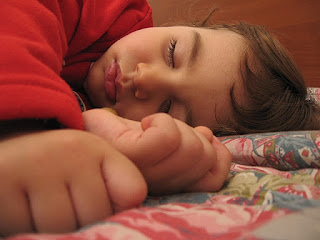Problem 2: I Just Fall Asleep
by Bob Peterson
This is the second in a series of articles to help solve problems inducing out-of-body experiences/astral projection. These are "Pre-OBE problems." Later I'll do a series of articles on Post-OBE problem solving.
Here's a link to the previous article: Problem 1: Nothing Happens.
This time I'll address a very common problem: you fall asleep when practicing. It happens to a lot of people, even the best of us. So here are some suggestions to solve it:
Practice in the morning
You're most likely to fall asleep if you practice right before bedtime. It's always best to make your OBE attempts in the morning, preferably right after you wake up from your last sleep cycle. That's when you should be more alert, conscious, and less tired. It's best to make your attempts right after you wake up, even before you even move your physical body.
Many people, myself included, need to get up early and go to work, which restricts the mornings on which you can practice. For that reason, I try to practice on the weekends and holidays.
When I was young and single, I used to spend Saturday and Sunday mornings trying to induce the OBE state: I'd wake up around 7:00 and start my OBE practice. After repeated attempts, I'd often give up and allow myself to drift back into sleep. Then I'd wake again around 8:30 and start practicing again. If that failed, I'd go into another sleep cycle and wake around 10:00, and try again. Some days I'd even go into a fourth cycle. Many days I didn't have that option because a neighbor would start mowing his/her lawn or countless other distractions.
Don't practice from your bed
We are all conditioned through years of habit to fall asleep when we are in our bedroom and in our bed. So you're much less likely to fall asleep when you practice from a couch, recliner, a chair, a hotel bed, or a bed at a friend's house. Some authors suggest setting asleep a special place, like a favorite couch, for your practice. That will condition your subconscious to think of it as your special OBE spot, and give you the right frame of mind.
Practice sitting up instead of lying down
I've had a vast majority of my OBEs lying down, but if falling asleep is a problem, you might be better able to focus if you're sitting up. Buddhist monks and other meditators often meditate sitting up. They often use a special meditation cushion and recommend keeping your back straight. It's worth a try.
Develop single-minded unwavering focus
We fall asleep by letting our minds drift. If you strive to maintain a single-minded unwavering focus, you're less likely to fall asleep. You need to silence the "Monkey Mind" and try to keep the inner thought-chatter to a minimum. The first few times you practice you may notice lots of mind-chatter (same goes for meditation), but the more you practice, the better you get at keeping your mind quiet, still and focused. It may take years or practice before you can keep your mind from its endless chatter.
Consider Caffeine
Author Michael Raduga suggests waking up very early in the morning or even the middle of the night, and slamming (quickly drinking) an energy drink, coffee, green tea or other drink with caffeine, then going back to sleep immediately before it takes effect. He claims to have good success doing this. Caffeine affects different people different ways. It's never kept me from sleeping, except in rare case. So you may want to experiment here.
Vary the amount of light in the room.
Our sleep cycles are greatly affected by the amount of light coming into the room where you practice. The more light, the harder it is to sleep. When people can't sleep at night it's often because they have too much light in their bedroom, and the solution is to make their bedroom as dark as possible by unplugging nightlights, putting black tape over LED charging indicators, turning off their cell phone's ambient display (or turning the phone over).
The opposite is also true when it comes to inducing OBEs: If you keep falling asleep, add more light to your practice area to inhibit sleep.
Don't be afraid to fall asleep
Lastly, don't be afraid to fall asleep. One common "rookie" mistake is to stay too alert and not let yourself get close enough to sleep. You need to carefully walk that knife-edge between awake and asleep. I've fallen off that edge and fallen asleep at least ten times for every successful out-of-body experience I've ever had. If you fall asleep, just chalk it up to experience and try again. Don't get discouraged, never lose hope, and don't stop praciticing.
Bob Peterson,
22 November 2022

